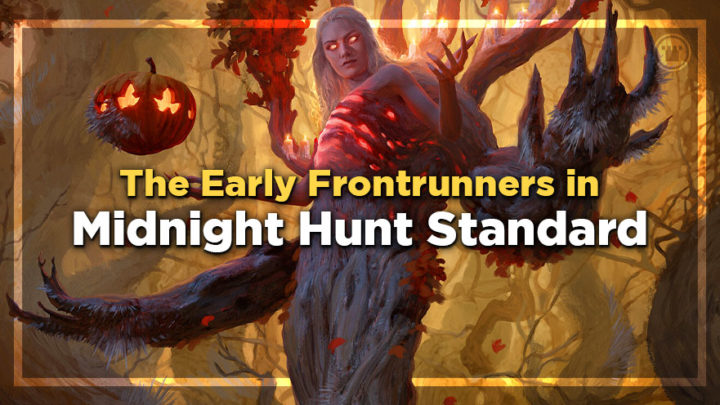The new Standard format is in full swing: we’ve had a few online tournaments and lots of ladder data. So today, we’ll be going over some early frontrunners for the best decks in the format. If you’re looking for a deck to play on MTG Arena or at your local FNM, I have three archetypes to recommend, along with different ways to configure them.
Gruul

Gruul has quickly become the litmus test for the Standard format. Its explosive starts and resilient mid-game have established it as the de facto deck to beat.
It’s easy to see why this deck is so strong, judging by its card quality. As rotation set in, Esika’s Chariot was quickly identified as one of the more powerful things you can be doing in Standard. It provides a ton of pressure on the board and three bodies for a single card. Cleanly answering this card is a tall ask, especially when Gruul can back it up with haymakers like Wrenn and Seven or Goldspan Dragon the next turn. Combine this with the Jaspera Sentinel and Magda engine, and you can deploy all these threats ahead of schedule.
Some Gruul players have opted for a light blue splash to enable cards like Negate and Disdainful Stroke from the board. Iterations like this did well at last weekend’s Standard Challenge on Magic Online; answering the few cards that can disrupt these decks will give you a huge edge, and you also have game against various strategies that attempt to go way over the top. Only time will tell which version is best, but I expect this Gruul shell to hold steady at the top of the Standard metagame for some time.
Before we move on, I wanted to mention the Gruul Werewolves build of this deck.
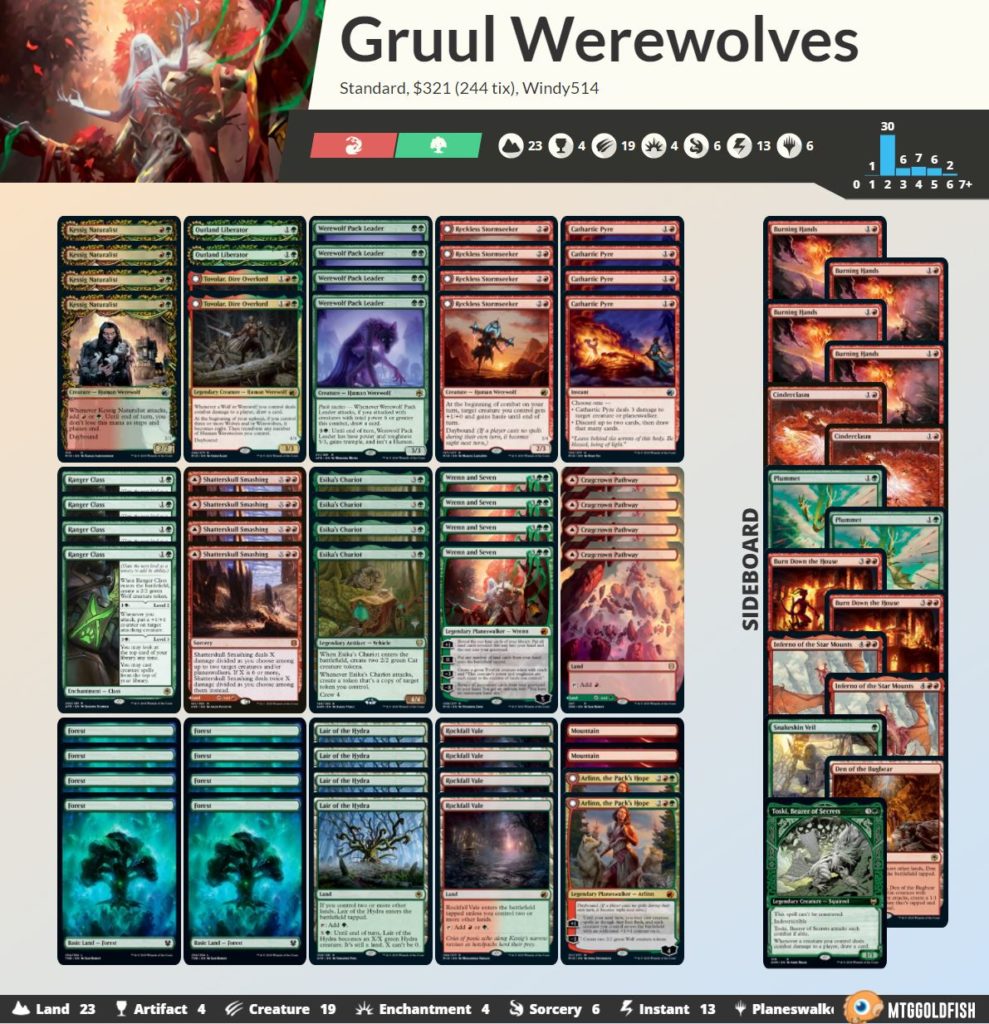
Long story short, this is more of a low to the ground Gruul deck. You’re looking to maximize Wolf synergies to put your opponent on the back foot. The early mana is much worse for a lot of your two-drops, so you might have a harder time casting your spells than you would in a Gruul Midrange deck. That being said, your best draws are blisteringly fast and will run your opponents over, especially if they stumble. I prefer the other builds to this one, but it’s still worth considering.
GW Lands
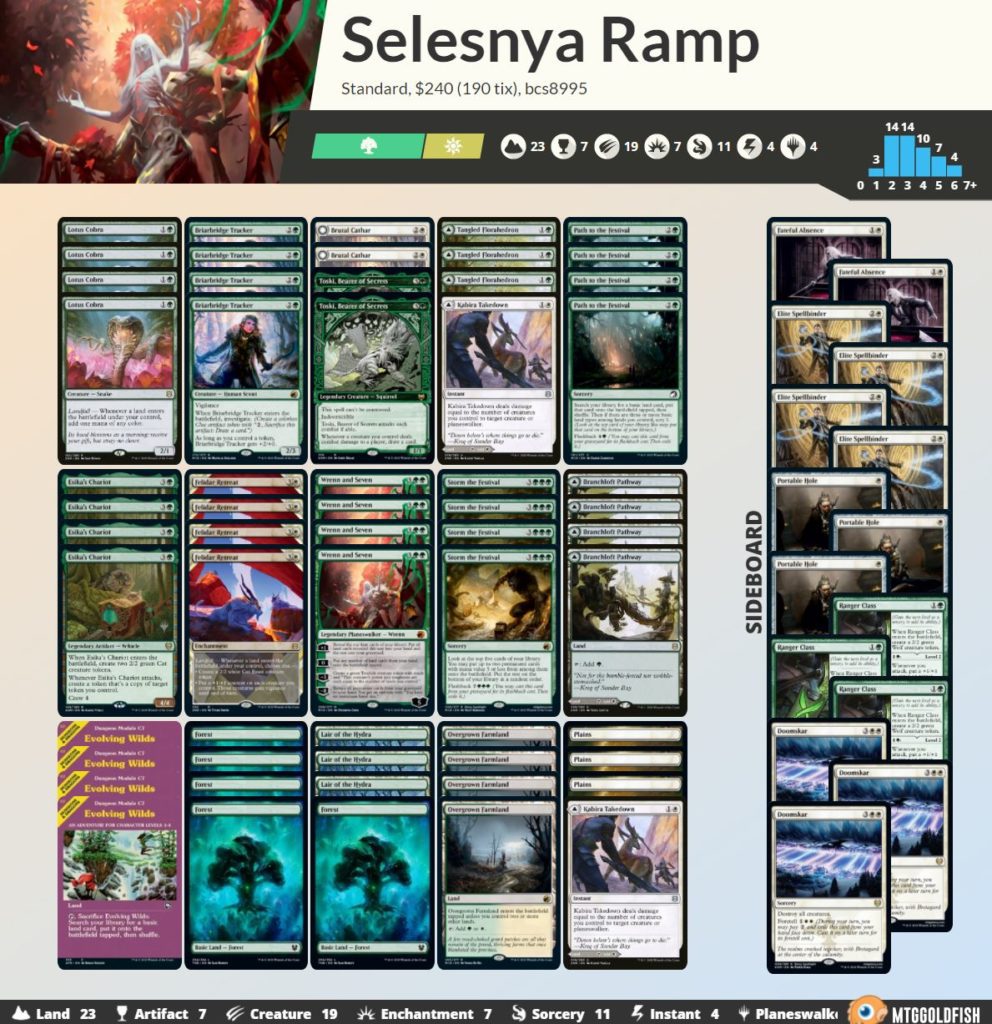
Green-White Lands also took home a trophy in an online event last weekend. This deck looks to take advantage of landfall synergies and overwhelm opponents with Felidar Retreat and Scute Swarm. This is another deck that looks to maximize Wrenn and Seven, who continues to be one of the most impressive threats in the format.
But this deck really goes over the top by utilizing Storm the Festival, which provides a huge burst in power to the board. In this deck, even the lands off Storm the Festival are worthwhile hits, since they can set off a flurry of landfall triggers.
It’s worth noting that there are a few different Festival decks right now, and a different build could prove to be stronger long-term. We’re already seeing players explore green-black options, where removal spells like Binding the Old Gods become hits off our Festivals. Personally, I’ve been working on a Bant build:
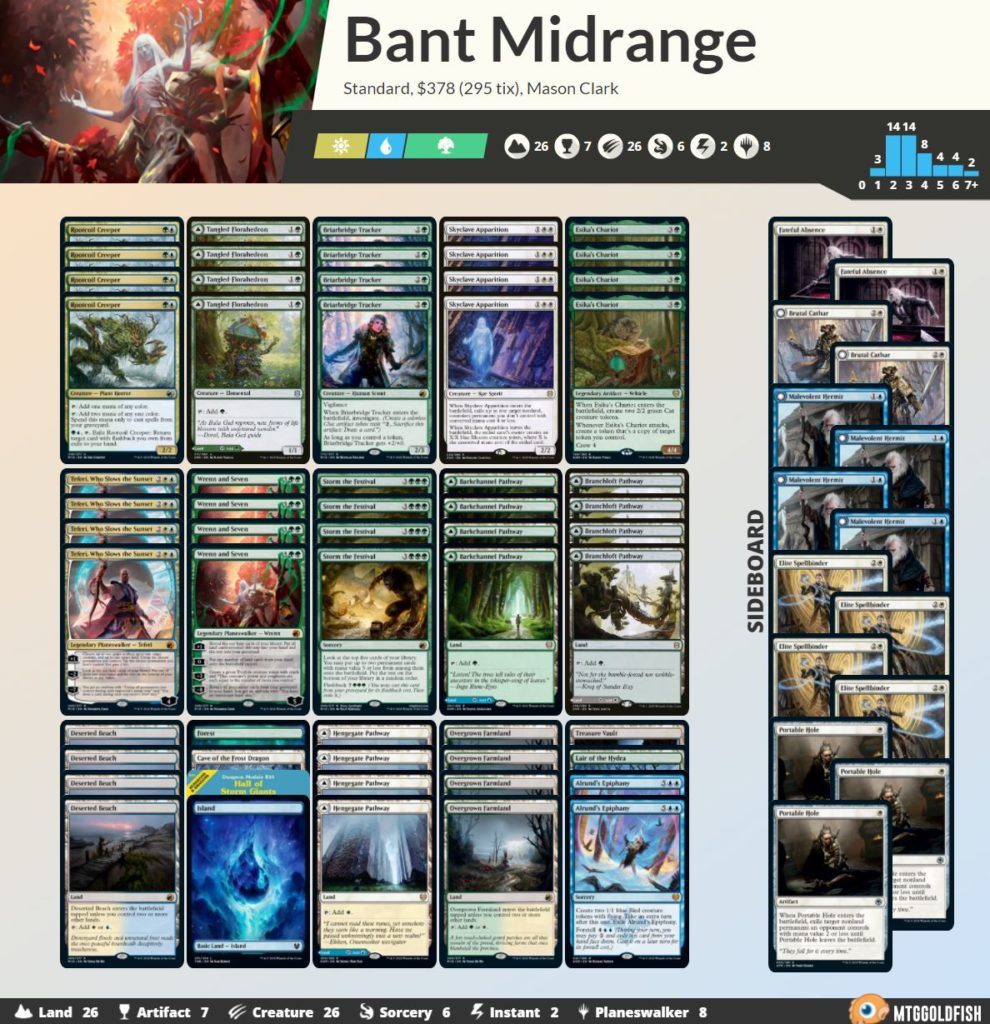
This Bant version provides access to a variety of cards and answers with Storm the Festival, without having to go all-in on being a ramp deck. I think Bant has some serious legs in this field, and I’d recommend it to anyone looking to play a bigger midrange deck.
UR Dragons
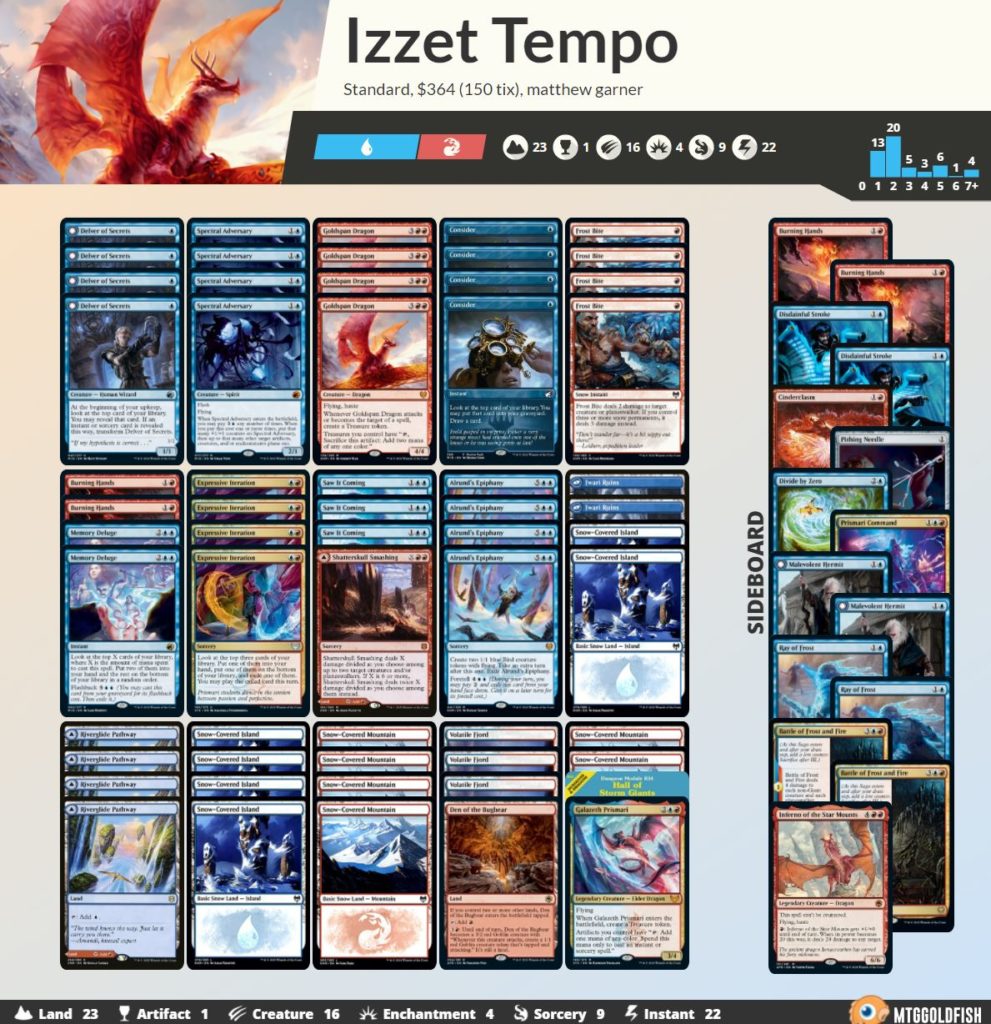
While Midnight Hunt has spawned a number of new strategies in Standard, making mana with Goldspan Dragon and taking extra turns with Alrund’s Epiphany is still one of the best things you can be doing. In fact, UR Dragons is a deck that will only improve as time goes forward. The key to this deck’s success is ensuring your answers line up with the threats in the format;. as the metagame becomes more defined, you’ll be able to tune your deck to the expected field.
I should point out that the supporting cards in Dragons decks vary wildly, and everyone has their own preferences. Some people still have the Snow package that we saw earlier this year. Other players have decided to move to non-Snow mana to lean harder on permission instead of spot removal. These approaches both have strengths and weaknesses, and I personally like moving away from Snow. First, while Faceless Haven is a great tool for beatdown decks, in decks like this, the card ends up being a bit more of a liability. Second, Frost Bite has lost some effectiveness in this new metagame, where four toughness has become the break point.
All of this led me to build this Blue-Red deck, which I highly recommend:
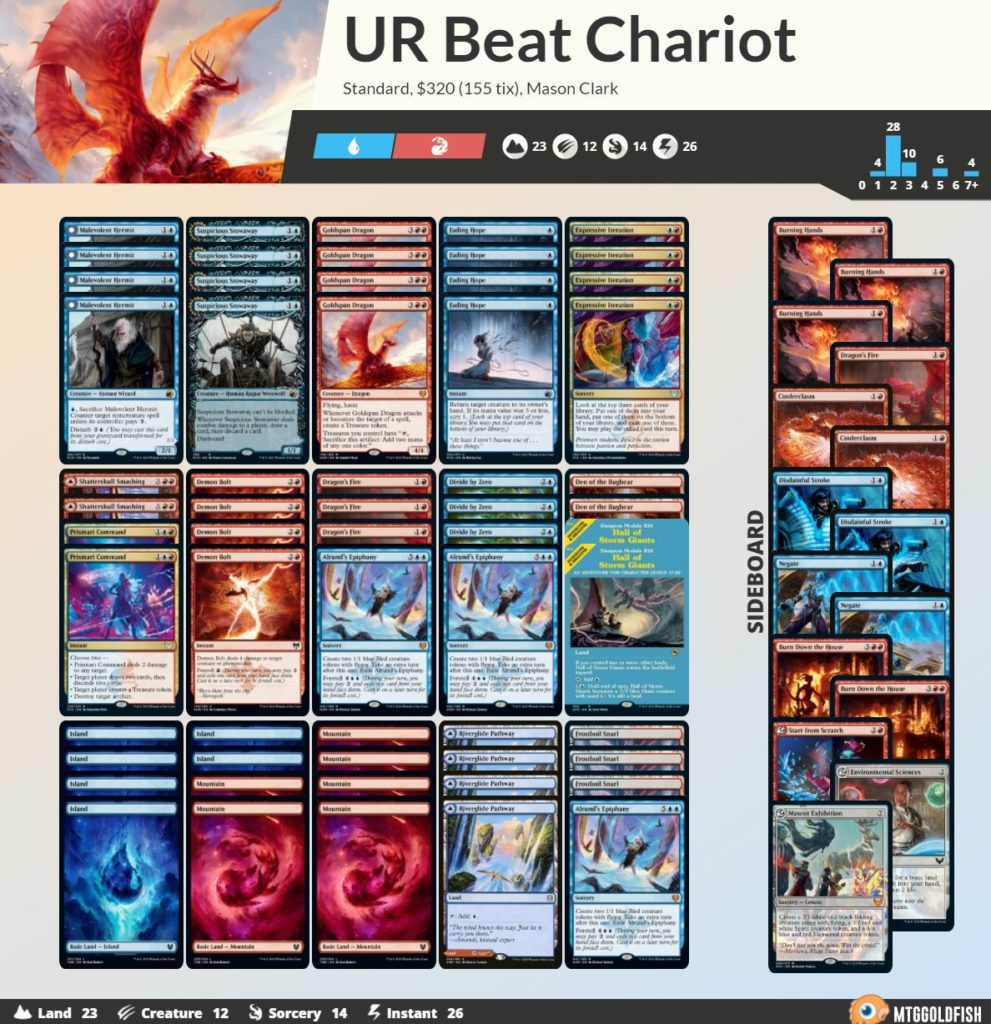
This version of the deck plays Demon Bolt to cleanly answer Esika’s Chariots and opposing Goldspan Dragons. It also plays Malevolent Hermit, which is great at keeping Chariot and Wrenn and Seven off the board, while being serviceable at holding the ground against beatdown decks. Finally, we have Fading Hope as a way to clear Wrenn and Seven tokens so we can keep the pressure up with the Dragons. I’ve been playing this deck for the last couple days, and it’s impressed me more and more. If you’re looking for a deck to play in a tournament this weekend, I highly suggest this one.
***
This new Standard metagame is fresh, fun, and exciting. While some cards have been seeing a lot of play across multiple decks, the format is still young and players are figuring out how to fight back against those cards. We have the early signs of a healthy format ahead of us, so if you’ve been meaning to get back into Standard, hopefully this helps you decide what to play.
What are you climbing the Arena ladder with? Tweet at me at @masoneclark and show me!

Mason Clark is a grinder in every corner of the game who has played at the pro level and on the SCG Tour with Team Nova. Whether he’s competing in Standard, Historic or Modern, Mason plays with one goal in mind: to be a better player than he was the day before. Check out his podcast, Constructed Criticism, and catch his streams on Twitch.

